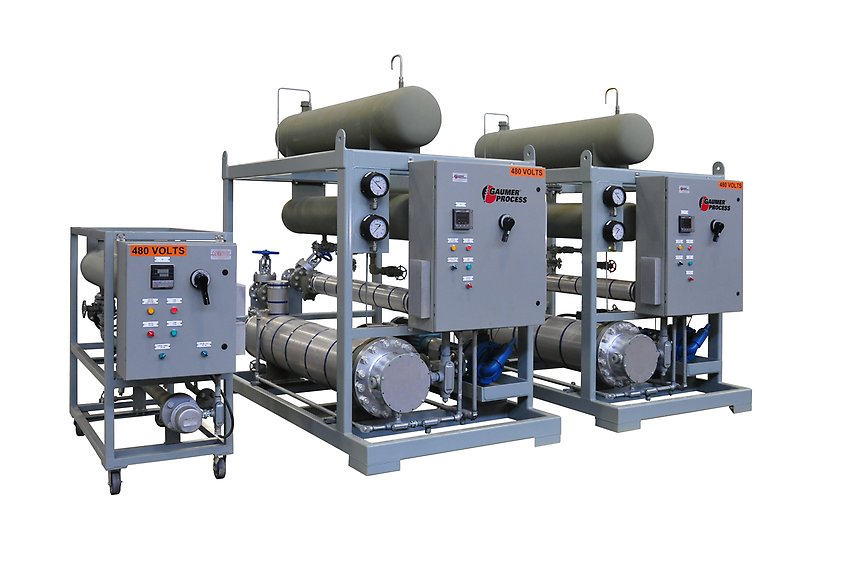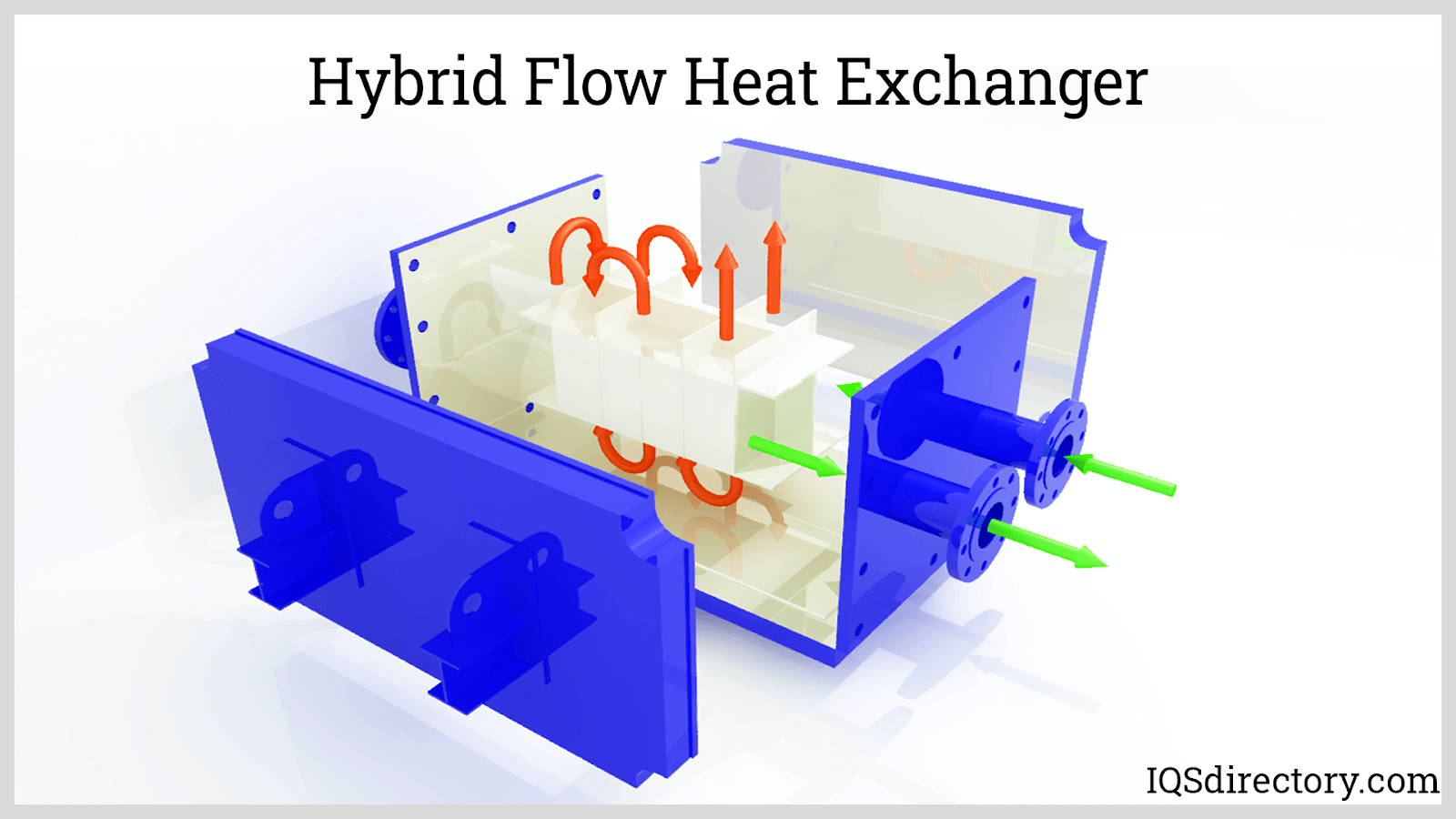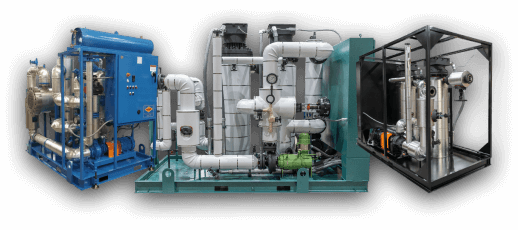Advancements in Heat Transfer Solutions: What You Need to Know for Optimum Efficiency
Innovations in Heat transfer systems are changing performance throughout numerous sectors. Advanced products like graphene and nanofluids assure substantial improvements in thermal conductivity. The combination of IoT and maker understanding supplies possibilities for real-time surveillance and improved power performance. The landscape of thermal monitoring is rapidly advancing. Understanding these advancements is vital for accomplishing suitable system performance and sustainability in the future. What certain innovations are forming this improvement?
Arising Products for Enhanced Heat Transfer

Advanced Heat Exchanger Designs
While typical Heat exchangers have offered their objective in different applications, advanced layouts are now emerging to fulfill the raising needs for effectiveness and performance. These innovative layouts, such as plate, shell-and-tube, and finned-tube Heat exchangers, include enhanced area and boosted flow patterns to enhance thermal transfer prices. Furthermore, small layouts enable lowered space requirements without endangering efficiency. Advanced products, such as composites and corrosion-resistant alloys, additionally enhance toughness and efficiency under severe problems. Simulation technologies and computational liquid characteristics are progressively employed to fine-tune these layouts, ensuring peak Heat transfer attributes. As markets seek to lessen power usage and take full advantage of result, the fostering of innovative Heat exchanger styles is crucial in achieving these purposes.
The Role of Nanotechnology in Heat Transfer
Nanotechnology plays a necessary function in boosting thermal conductivity within Heat transfer systems. By adjusting materials at the nanoscale, scientists have attained substantial improvements in energy efficiency. These advancements not only maximize performance but also contribute to even more sustainable power remedies.
Boosted Thermal Conductivity
Considerable developments in thermal conductivity have arised with the application of nanotechnology, reinventing Heat transfer systems across numerous sectors. By including nanoparticles into Heat transfer fluids and materials, researchers have achieved impressive rises in thermal conductivity. These nanoparticles, such as carbon nanotubes, graphene, and steel oxides, improve the Heat transfer buildings due to their high surface location and distinct thermal features. The resulting composites exhibit improved performance in applications varying from electronics cooling down systems to renewable resource technologies. The capacity to customize the dimension, form, and structure of nanoparticles enables for maximized thermal monitoring options. Because of this, nanotechnology remains to play an essential function in the growth of a lot more reliable and effective Heat transfer systems, paving the method for enhanced industrial applications.
Power Efficiency Improvements

Assimilation of IoT in Heat Transfer Equipments
The assimilation of IoT in Heat transfer systems presents the implementation of clever sensors that boost functional effectiveness. These sensors make it possible for real-time information tracking, enabling immediate modifications and optimizations. This technological improvement has the potential to considerably enhance performance and power monitoring in Heat transfer applications.
Smart Sensors Application
As Heat transfer this hyperlink systems advance, the integration of clever sensing units through the Internet of Things (IoT) has emerged as a transformative method. These sensing units allow real-time tracking of flow, stress, and temperature rates, improving system efficiency and dependability. By collecting and transferring information, they help with positive maintenance, decreasing the threat of system failings. Furthermore, wise sensors add to power cost savings by refining operational specifications based on environmental problems. Their capacity to evaluate trends and abnormalities enables notified decision-making, guaranteeing peak performance of Heat transfer systems. As industries significantly adopt this modern technology, the application of smart sensing units stands to revolutionize just how Heat transfer systems are managed, leading the way for greater sustainability and improved performance results.
Real-Time Information Surveillance
Just how can real-time information keeping track of boost the performance of Heat transfer systems? By integrating Internet of Points (IoT) technology, Heat transfer systems can leverage continuous data collection from clever sensing units. This real-time tracking permits for prompt analysis of stress, temperature, and flow rates, allowing drivers to determine inadequacies promptly. As a result, adjustments can be made to optimize performance, minimize energy consumption, and expand equipment life-span. Additionally, predictive maintenance can be executed, decreasing unforeseen downtime and costly repairs. The capability to imagine efficiency metrics through dashboards boosts decision-making, fostering an aggressive technique to system administration. Eventually, real-time information monitoring not only boosts functional performance however additionally adds to sustainability goals within commercial processes.
Energy Performance and Sustainability Trends
Energy effectiveness and sustainability fads are improving the landscape of Heat transfer systems, driving innovation and conformity throughout various industries. Organizations are significantly focusing on energy-efficient styles to lower functional prices and lessen environmental effects. The assimilation of eco-friendly power resources is becoming much more prevalent, allowing Heat transfer systems to run sustainably while fulfilling regulatory demands. Furthermore, improvements in technologies and products promote lower energy intake and boost general efficiency. Lifecycle analyses are additionally gaining grip, allowing firms to review the environmental impact of Heat transfer systems from manufacturing to disposal. This concentrate on sustainability not just supports business obligation however also positions companies competitively in a market where consumers progressively prefer green solutions. Energy performance and sustainability stay essential factors to consider for future growths in Heat transfer innovation.
Developments in Thermal Management Solutions
While the need for efficient Heat transfer remains to increase, innovations in thermal administration services are emerging to deal with both efficiency and sustainability challenges. Advanced products, such as phase modification materials and nanofluids, are being developed to enhance Heat transfer performance - DVS Heat Transfer Systems. These materials improve thermal conductivity and permit better temperature law in various applications. In addition, modern technologies like energetic thermal control systems are getting grip, allowing real-time changes to handle Heat flow successfully. These systems add to energy financial savings and decrease the ecological influence of thermal procedures. The integration of IoT in thermal monitoring promotes surveillance and anticipating maintenance, ensuring enhanced efficiency and durability of Heat transfer systems. Generally, these developments stand for considerable strides towards more lasting thermal administration practices
Future Instructions in Heat Transfer Technology
Emerging developments in thermal administration solutions indicate an encouraging future for Heat transfer modern technology. Researchers are significantly concentrating on creating products with exceptional thermal conductivity and boosted energy effectiveness. Our site Developments such as nanofluids, which have put on hold nanoparticles, offer substantial improvements in Heat transfer performance. Furthermore, the integration of wise products that adjust to varying temperature level conditions is getting grip, pop over here permitting even more responsive and effective systems. The increase of additive manufacturing methods is additionally enabling the design of intricate Heat exchanger geometries that enhance fluid flow. The application of device learning algorithms is expected to change the optimization of Heat transfer systems, promoting anticipating upkeep and efficiency improvement. Collectively, these advancements are positioned to change the landscape of Heat transfer technologies in numerous markets.

Regularly Asked Questions

Just how Do I Select the Right Heat Transfer System for My Application?
Selecting the best Heat transfer system includes evaluating application needs, including temperature arrays, fluid properties, and effectiveness demands. Examining system types, maintenance considerations, and cost-effectiveness additionally plays a necessary duty in making an educated decision.
What Are the Upkeep Requirements for Advanced Heat Exchangers?
Upkeep needs for innovative Heat exchangers normally include regular evaluations, monitoring for leaks, cleaning of surfaces, and guaranteeing ideal flow prices. Sticking to maker guidelines warranties efficient operation and lengthens the equipment's lifespan.
How Do Ecological Factors Affect Heat Transfer Efficiency?
Ecological factors considerably influence Heat transfer performance. Variants in temperature level, airflow, and humidity influence thermal conductivity and convective Heat transfer, inevitably influencing system performance and demanding consideration during the design and operation of Heat transfer systems.
What Safety Specifications Apply to Heat Transfer Equipments?
Safety standards for Heat transfer systems usually consist of guidelines from companies such as ASME and ASTM. DVS Heat Transfer Systems. These criteria address materials, design, and functional techniques to ensure integrity, performance, and defense versus dangers in different applications
How Can I Repair Usual Heat Transfer System Issues?
Repairing usual Heat transfer system issues includes checking for leaks, making certain proper fluid flow, checking insulation honesty, and confirming temperature level differentials. Recognizing these aspects can help preserve system performance and avoid further issues.
Nanotechnology plays a necessary function in improving thermal conductivity within Heat transfer systems. Significant improvements in thermal conductivity have actually arised with the application of nanotechnology, reinventing Heat transfer systems throughout different markets. Developments in thermal conductivity via nanotechnology have actually led the way for amazing enhancements in energy effectiveness within Heat transfer systems. Energy effectiveness and sustainability fads are improving the landscape of Heat transfer systems, driving advancement and compliance across various industries. The integration of IoT in thermal management assists in tracking and predictive upkeep, making sure enhanced efficiency and long life of Heat transfer systems.